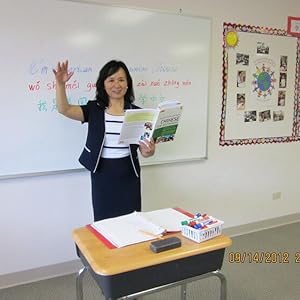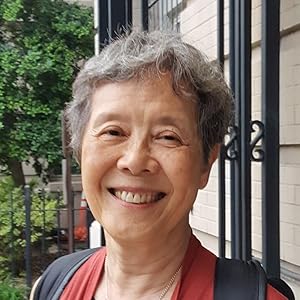Cornelius C. Kubler
关于作者
CORNELIUS C. KUBLER, Stanfield Professor of Asian Studies at Williams College, received his B.A., M.A., and Ph.D. degrees in linguistics from Cornell University. He earned a second M.A. in Chinese literature from National Taiwan University. From 1980-1991 he was employed at the Foreign Service Institute, U.S. Department of State, where he served as Language Training Supervisor in Mandarin, Cantonese, Japanese, and Mongolian; as Principal of the advanced Chinese field school in Taiwan; and as Chair of the Department of Asian and African Languages. Since coming to Williams in 1991, he has chaired the former Department of Chinese and Asian Studies Program as well as the Department of Asian Studies, which he was instrumental in founding. He has also taught at Eisenhower College, Portland State University, Middlebury College, National Taiwan Normal University, and Chinese University of Hong Kong. Kubler, who is author or coauthor of 15 books and over 50 articles on Chinese language pedagogy and linguistics, frequently serves as reviewer or consultant for Chinese and Asian Studies programs in the U.S. and overseas. He has served as Chair of the Test Development Committee for the SAT Subject Test™ in Chinese and as member of the Executive Committee of the Association of Departments of Foreign Languages of the Modern Language Association. Below are some questions received from users of Dr. Kubler's new BASIC CHINESE series along with his answers to them: READER QUESTION: What are the 3 tips you’d give to someone who wants to learn Chinese on their own? I know your books are being used at a lot of top universities, but I’m not sure if I could use them to learn Chinese on my own, at home? DR. KUBLER ANSWERS: The Basic Chinese series was designed with the needs of independent learners like yourself in mind. The grammatical and cultural notes in each lesson of the textbook explain in detail everything you need to know, and the copious exercises in the workbook and on the DVD and CDs offer many hours of useful practice. As for my 3 tips, they would be: (1) Start with listening and speaking (at the beginning, Chinese characters tend to slow you down, you can take them up later); (2) Be sure you have not only the textbook (Basic Spoken Chinese), but also the workbook (Basic Spoken Chinese Practice Essentials), since it contains most of the exercises, which are especially important for independent learners; (3) When using the DVD, after you have mastered a Basic Conversation, click "Chinese speaker only" and YOU play the role of the American speaker, and then you can click "American speaker only" and play the role of the Chinese person. In addition, try to meet with a teacher or native-speaking friend for an hour each week for communicative practice using the new material in the lesson. There are many more suggestions for independent learners in the Basic Chinese textbook, workbook, and Instructor's Guide. READER QUESTION: I have a background in Romance languages; on the graduate level I studied theoretical linguistics. About a year ago, I began to study Chinese, having never before pursued an Asian language. I made progress, but was disillusioned by the slow pace at which I was learning. Then, several weeks ago, I ran across your Basic Written Chinese and purchased it. Within short order, my acquisition rate accelerated. I'm now awaiting the arrival of the Basic Spoken Chinese book; will I make faster progress using the combination of the two books, Written and Spoken? DR. KUBLER ANSWERS: Thank you for your kind words about Basic Written Chinese. Like yourself, I also am a linguist (I started out in German, then studied Latin and several Romance languages, and ended up specializing in East Asian languages). The Basic Chinese books, as you know, take the approach of separating the learning of SPOKEN Chinese from the learning of WRITTEN Chinese, since that helps English speakers learn Chinese more efficiently. That said, I'm glad to hear that you've also ordered Basic Spoken Chinese (and, I hope, the Practice Essentials workbook that goes with it), because most people who learn Chinese will eventually want to learn speaking, listening, reading, and writing. Moreover, it's important to be aware that the Basic Written Chinese book presupposes familiarity with the corresponding lesson in Basic Spoken Chinese, since almost all comments about pronunciation, grammar, vocabulary, culture and so on are in the Spoken Chinese book. I think you'll find that if you've first mastered a lesson in the Spoken volume, then the corresponding Written lesson will be much easier. My best wishes for your study of Chinese! READER QUESTION: I'm learning a lot from your books but have a few questions. Basic Spoken Chinese writes zemmeyang with two "m"s and yidianr with a 4th tone on the yi. I looked on the Internet and in a Chinese dictionary, and I couldn't find zemmeyang but only zenmeyang (with an "n"), and I could also only find yidianr (with a 1st tone on the yi). Are these mistakes in the book or are both pronunciations (and Pinyin spellings) valid? DR. KUBLER ANSWERS: I appreciate your questions and your attention to detail. The Pinyin spellings I use in the books are not mistakes but reflect how these words are actually pronounced by Chinese native speakers. This reflects one of the principles of Basic Chinese, which is to present Chinese as it's actually spoken! As for your first question about zemmeyang, the answer to that question is actually in note 2B on p. 81. As it says there, the characters are individually pronounced zen + me + yang, but nobody says this; what they say is zem + me + yang (the -n changes because of the influence of the following m-). As for why we write yidian with a 4th tone on the yi rather than a 1st tone, look at note SV2 on p. 124, which explains that the syllable yi changes to 4th tone before all syllables except 4th tone syllables. Chinese dictionaries (most of which are based on characters, not on speech) usually don't reflect this, but this is indeed how the language is spoken. Good luck to you in your Chinese language studies!
阅读完整简历















